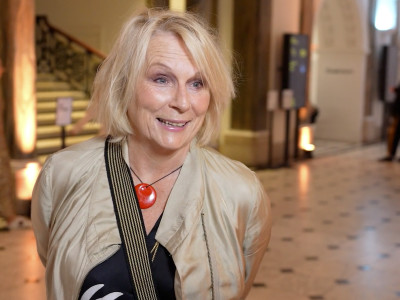
Meet the architects: Diébédo Francis Kéré
By Kate Goodwin
Published on 24 December 2013
When putting together this group of architects I purposefully sought out those who would bring a variety of perspectives on how we think about architecture and the spaces around us.
I sought those from different cultures, generations and geographies. As I hope this blog has captured, the conversations I have had with them all have constantly broadened my own understanding of architecture.
This was none more evident than with Francis Diébédo Kéré. Born in Burkina Faso, he left West Africa as a teenager on a German aid scholarship to complete his education. While still an architecture student, he won the prestigious Aga Khan Award for Architecture for a school he designed in his native Gando. While he has an office in Berlin, he continues to straddle the two worlds of Europe and Africa. He brings what he has learnt in the west – what he describes as technological know-how – and combines it with local materials and traditions. As he says, it is about listening and understanding, and then seeing what he can bring to the process… His building sites are places of experiment and engagement for all.
"In Burkina Faso it’s important that when people are a part of the projects, you create a strong attachment. But at the same time if you are making people responsible and aware of what they have done, and aware of their potential- their capacity to do something – they’ll care about it; they’ll appreciate it much more. The collective experience is always part of things you do in Africa, but here the collective experience is to be inspired by something that is there, to be together to see, to consume this object. We describe seeing it, experiencing it as consuming" (Kéré)


Sections of traditional clay pots set in the ceiling of the School Library admit light and promote air circulation.
The very notion of an architect is foreign where he grew up. Buildings are made through knowledge passed and shared, and using materials that are available and to hand. With the work he has done, he has both celebrated and enhanced these traditions.
“I went back to visit the project, and suddenly people come from all around: somebody said 'the architect is back!', and people don’t know about architects and architecture at all. But we transformed the material that they knew, we took it from the people and let them transform it, cut it differently and lay it differently. It was a surprise for them. People said ‘okay, this is something we call architecture’… So maybe that is what I can bring.”
Kéré paints wonderful pictures with his words and his energy is palpable. His world became even more alive for me recently. We have commissioned Canny Richardson to make films of the architects and their works (which will be available online when the exhibition opens).
We met on her return from Burkina Faso and she described some of her experiences: of the landscape, of the people, of the structures and of how Francis is so highly revered. She showed me some beautiful footage and moments that she captured. Here is one snippet which I really liked.
Visiting Kéré in Burkina Faso - film by Canny Richardson
Something she said she was not anticipating was the dark, simply because here – in London in particular – we rarely experience it. She described being led at dusk (about 6pm) by Francis to the site of the Women’s Centre, a very special project still under construction. As the sun went beyond the horizon a small amount of light hovered in the atmosphere, and she could just make out shapes that let her follow the figure in front of her, before darkness descended entirely.
As she told me about this, something Francis had spoken about came to mind. I asked him about ‘spatial experiences’ in a desire to explore ideas and influences beyond formal architecture. Space for him was created by people – it was physical and also aural, and was about a sense of containment in a vast landscape. For him what came to mind was the following:
Every night when I was a child my family gathered together. We would sit close to each other in a sort of circle and listen to the adults telling stories; there was no light so we couldn’t see each other. It was an intense feeling of being in a safe, protective space that had been created through our presence, along with the lone voice of the storyteller in the darkness. All of us in the circle hung on every word.
Sensing Spaces: Architecture Reimagined is at the Royal Academy from 25 January – 6 April 2014


